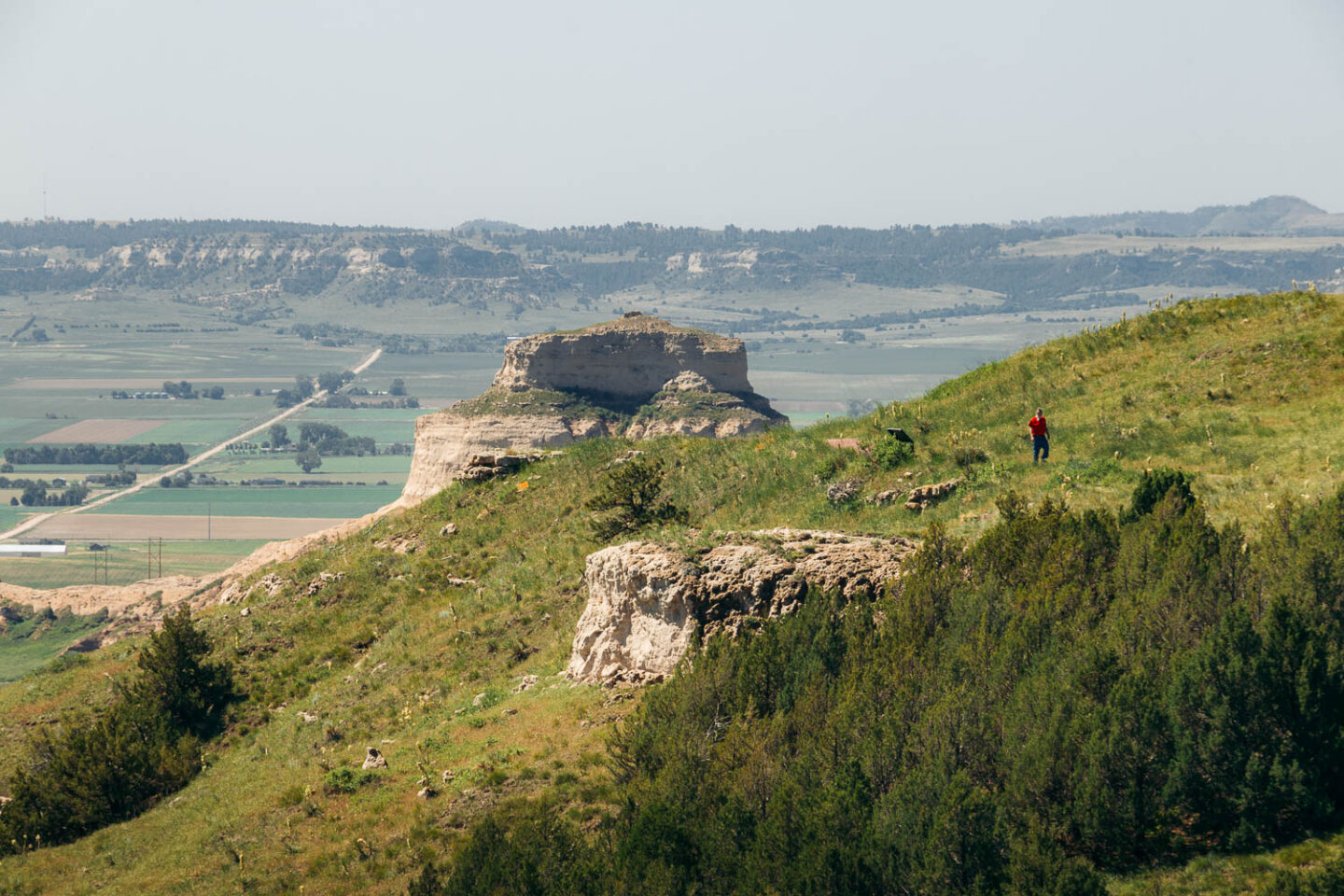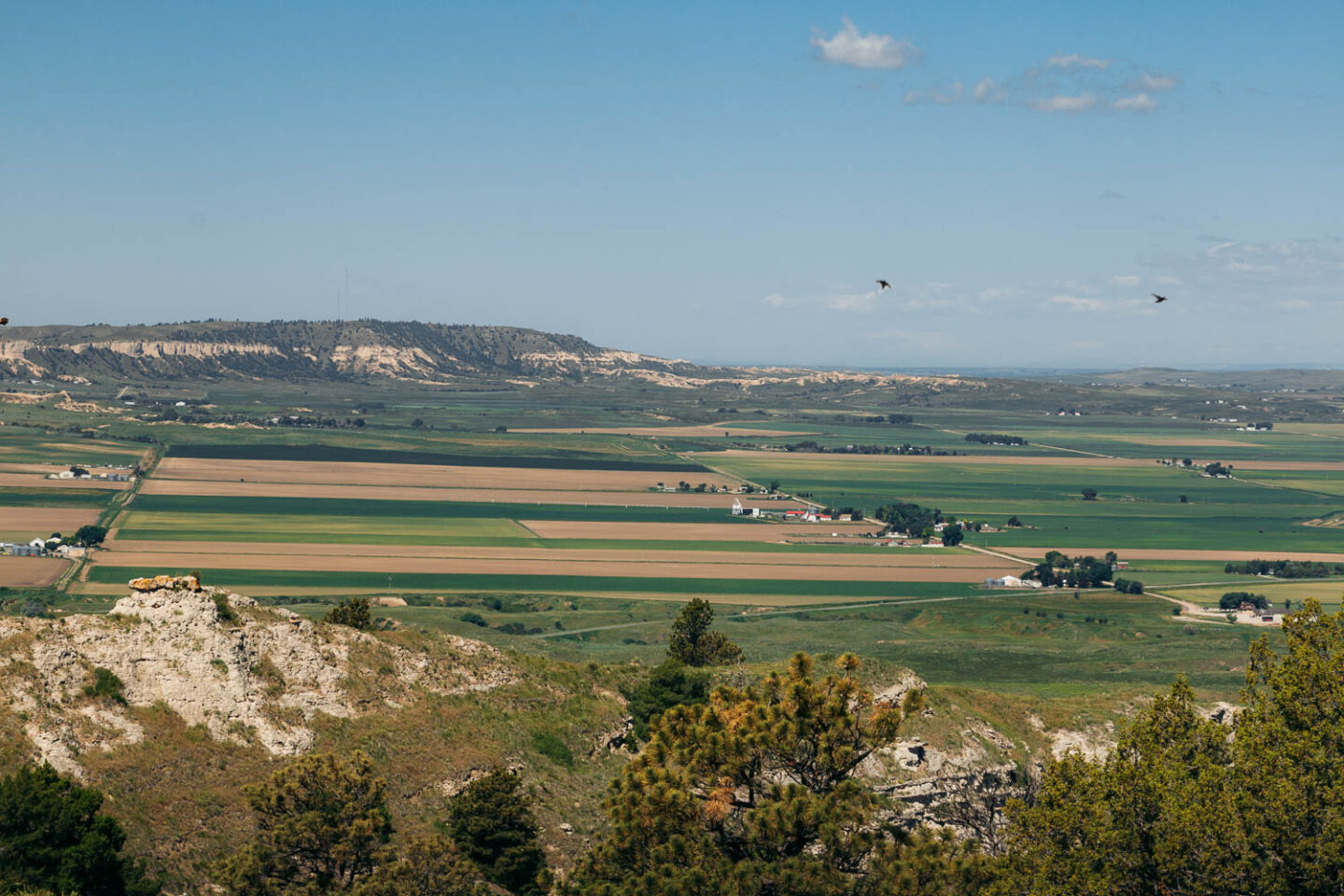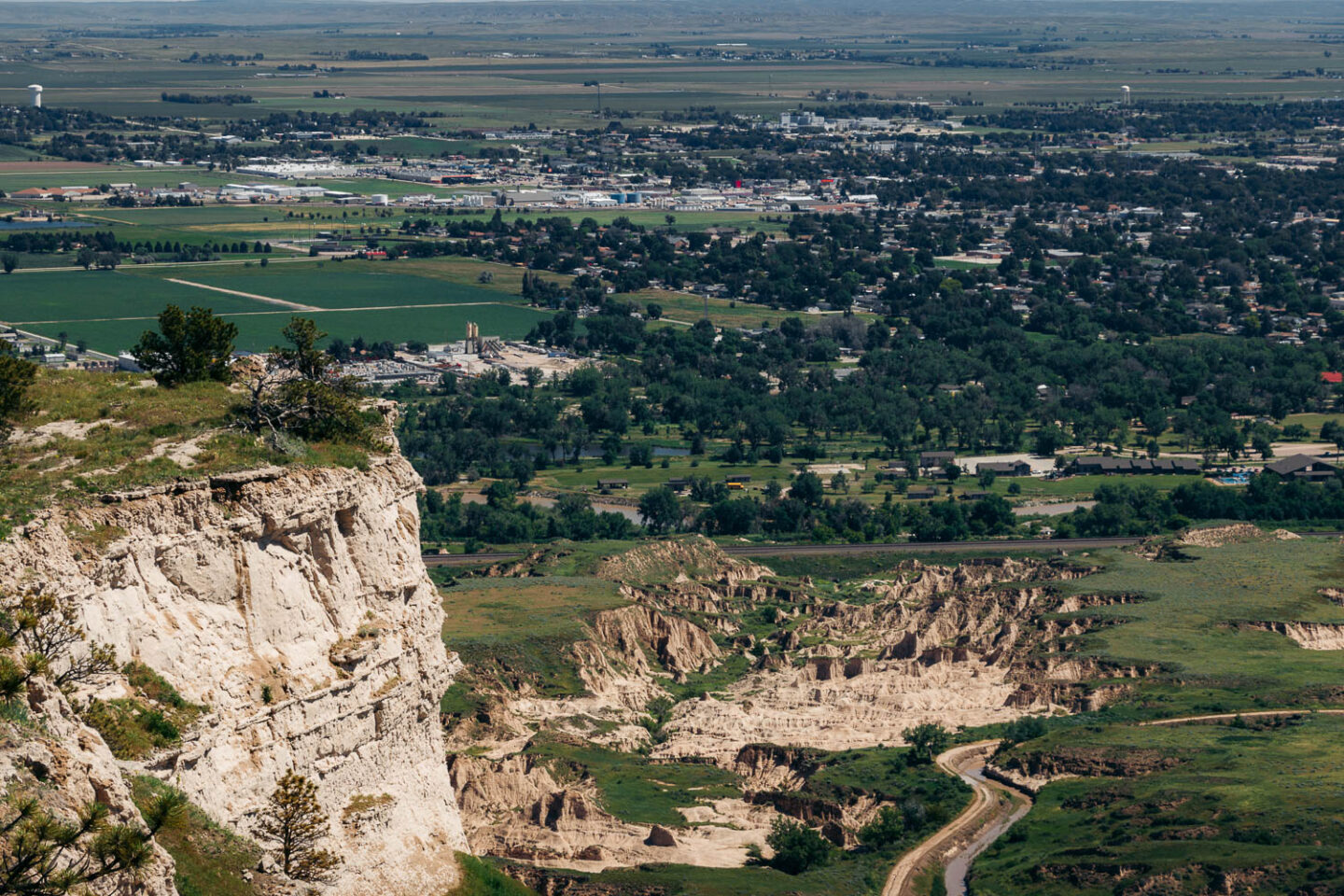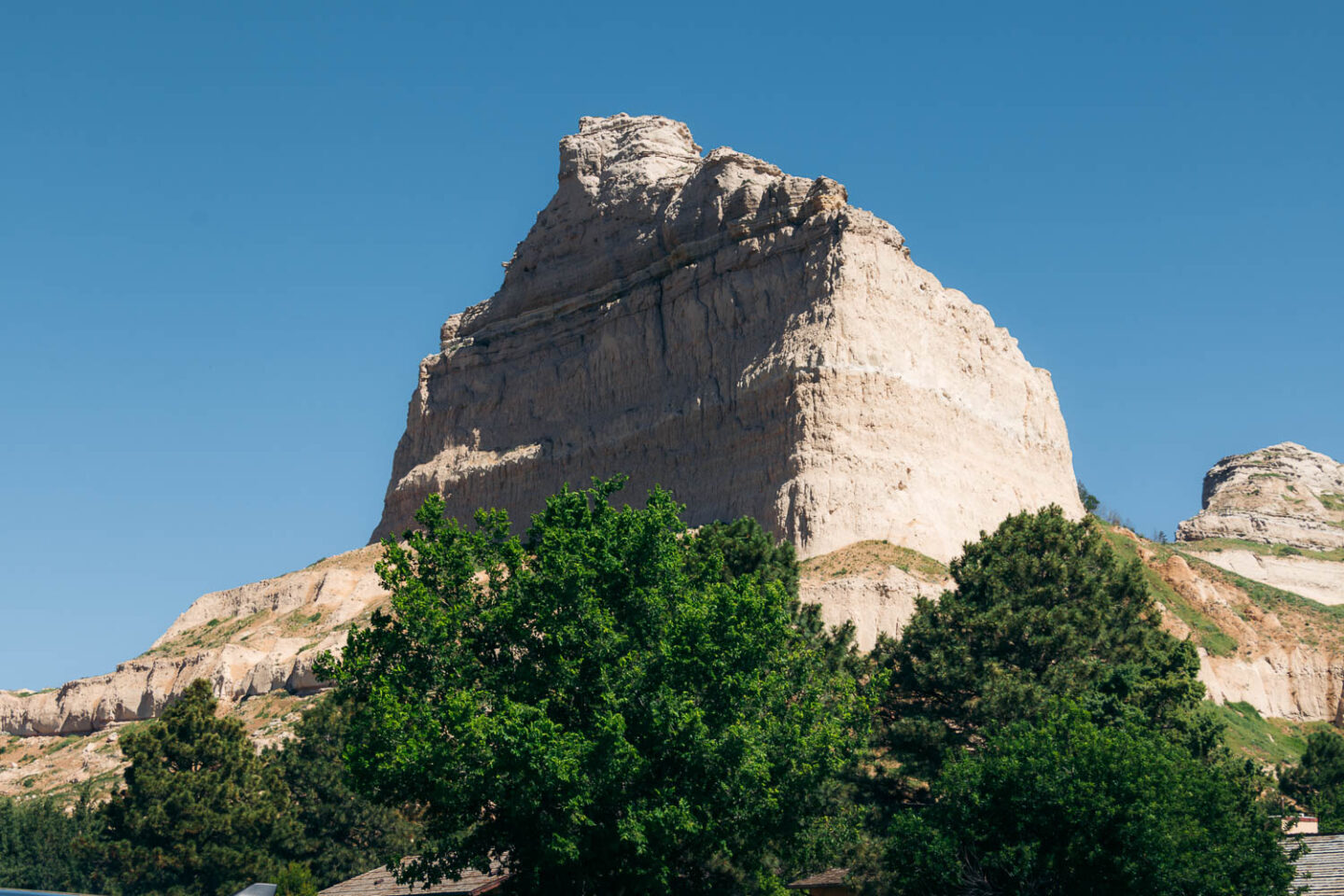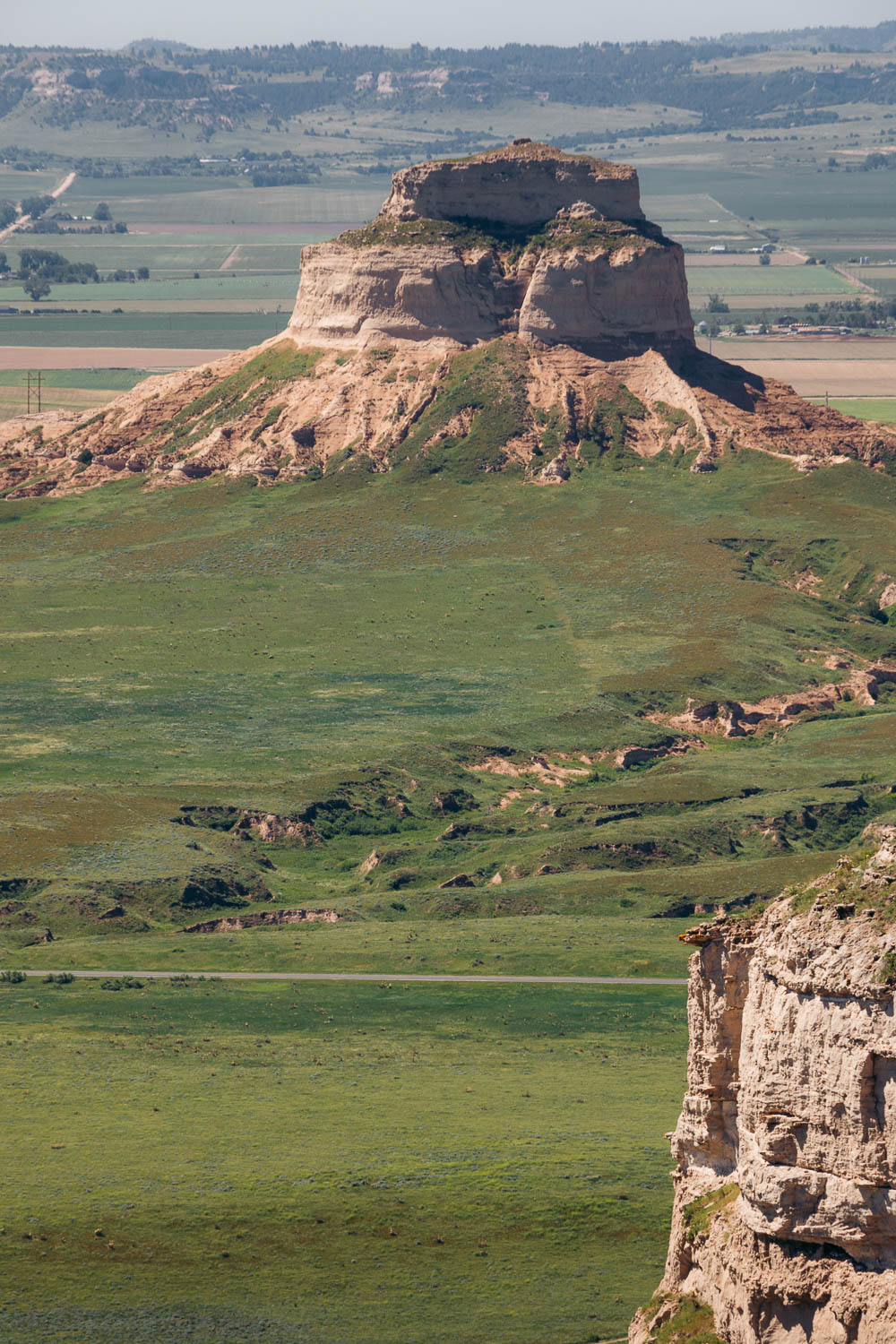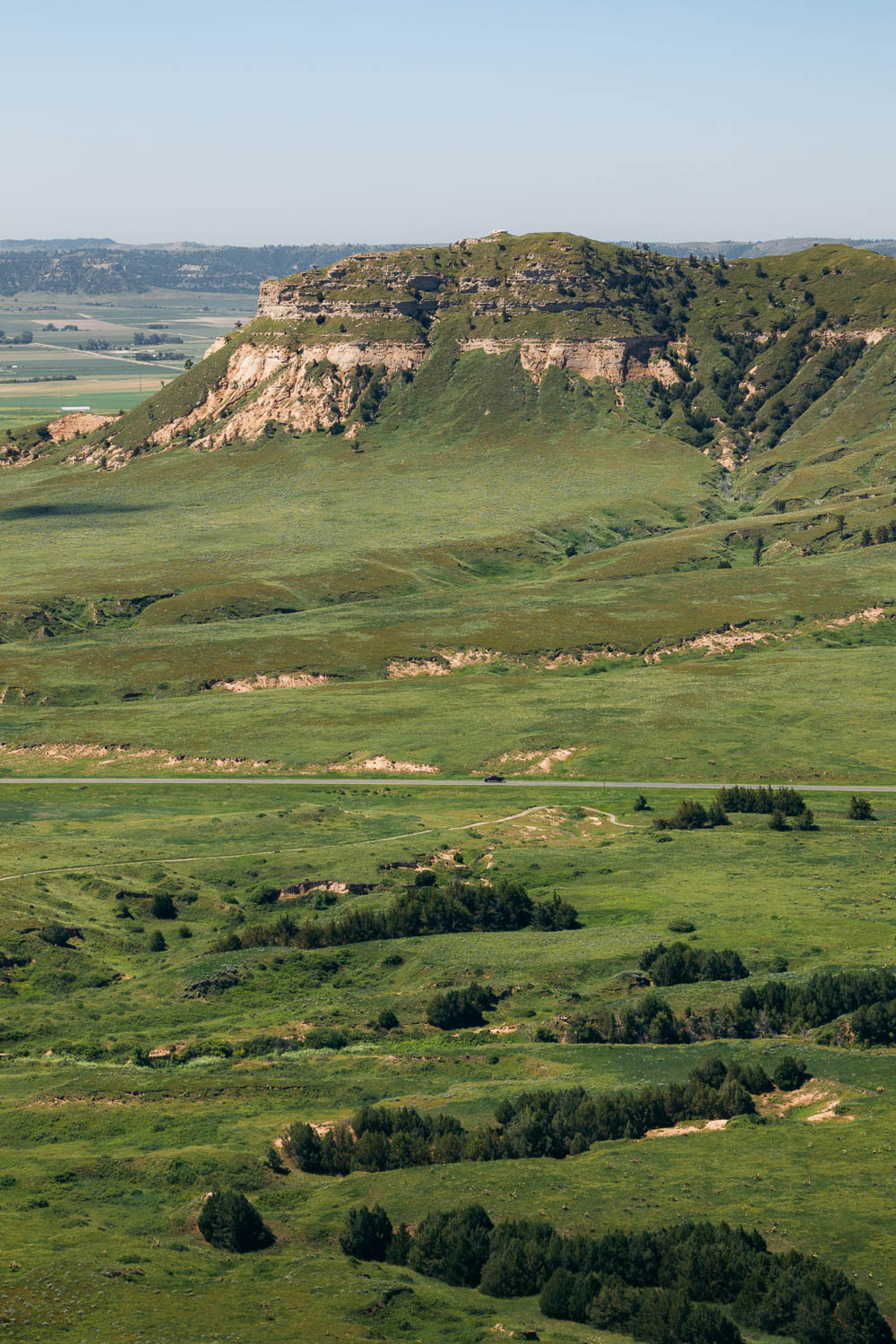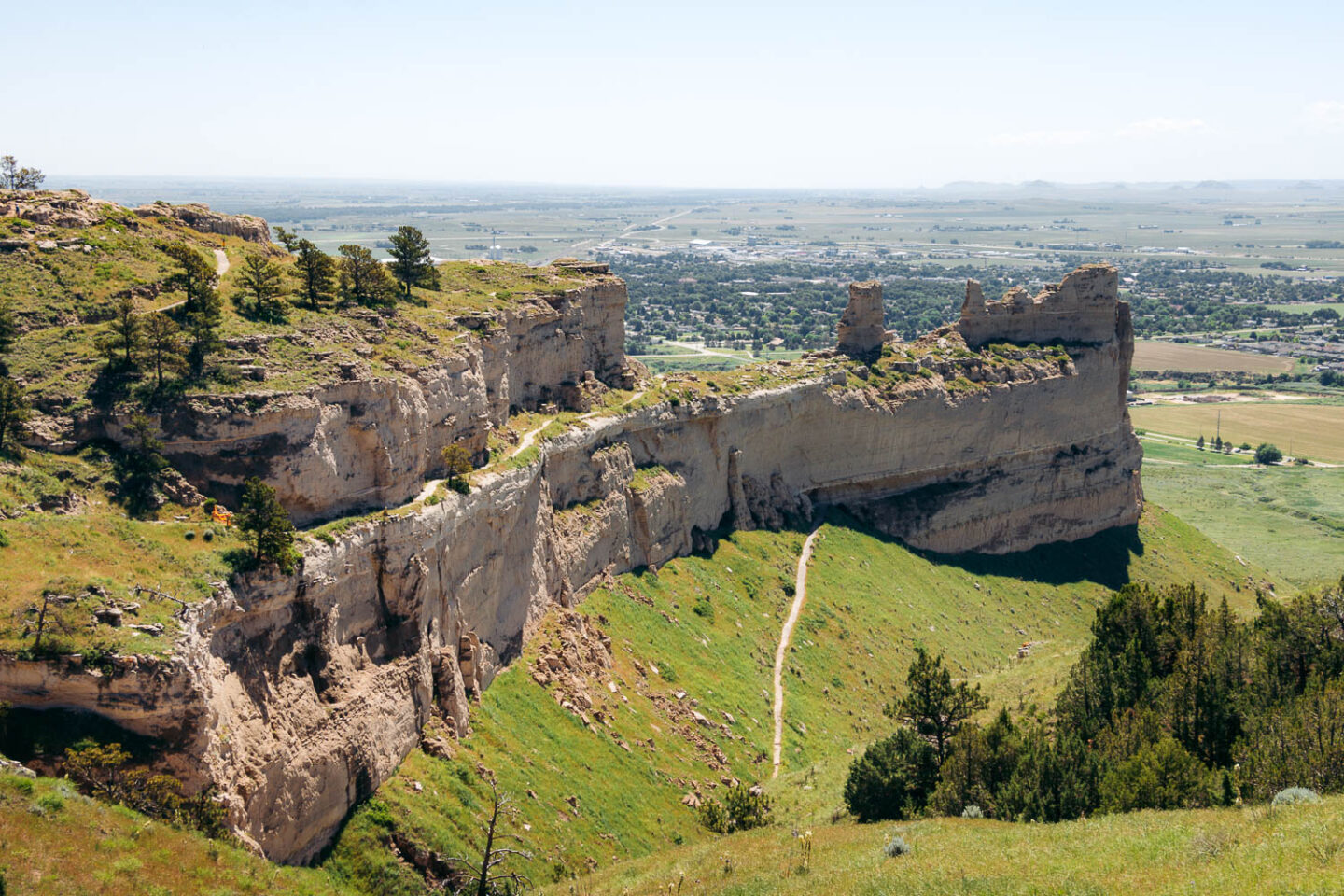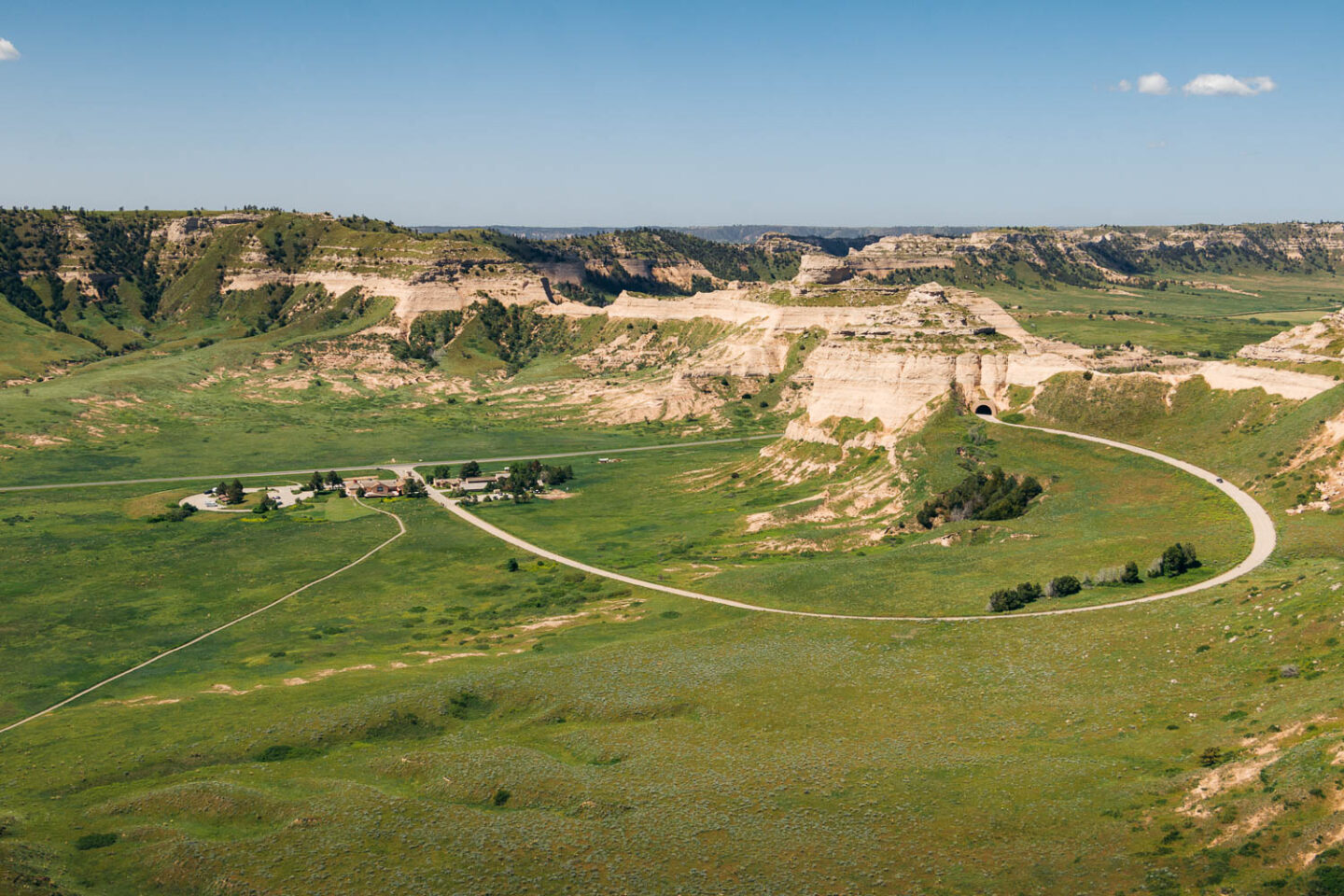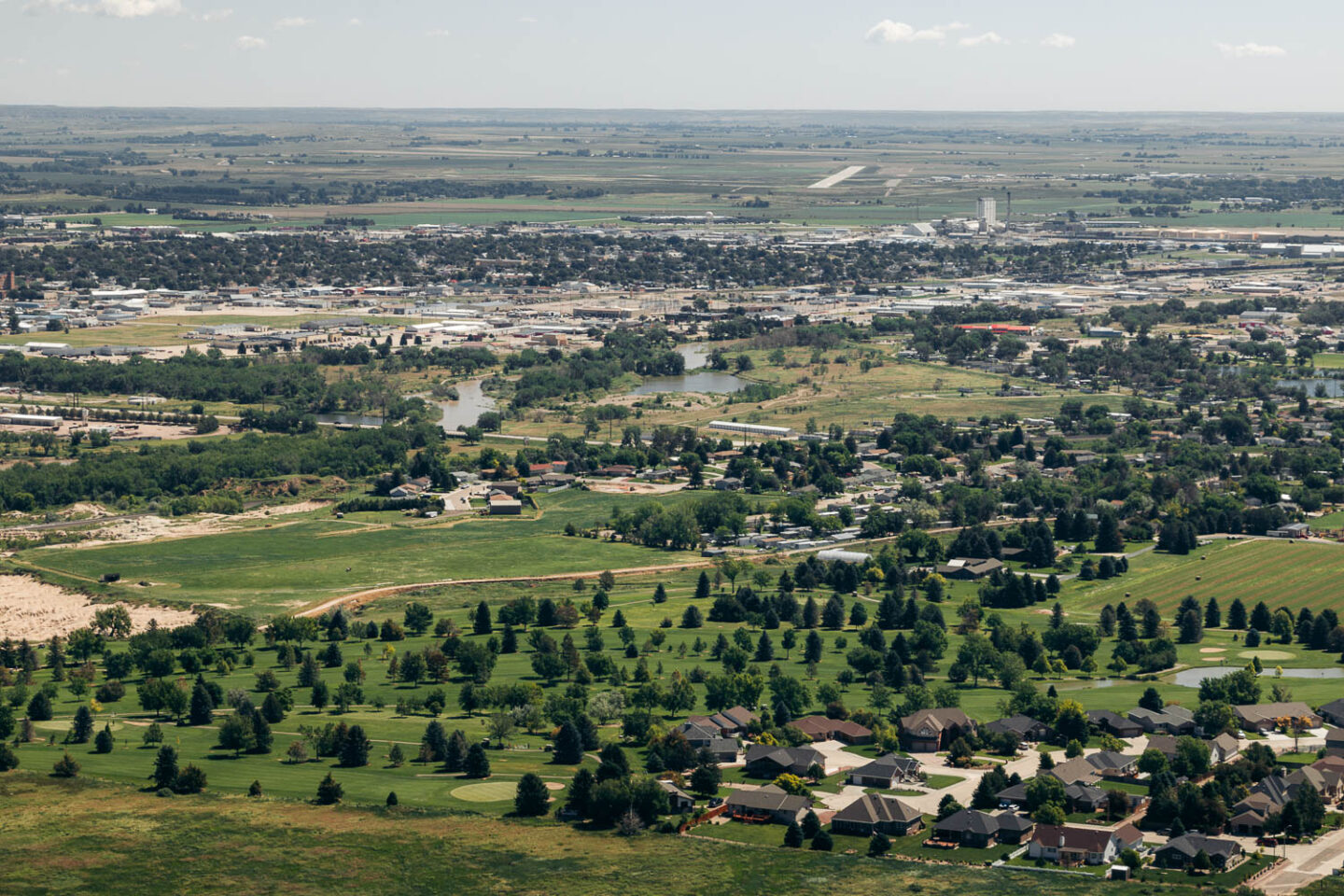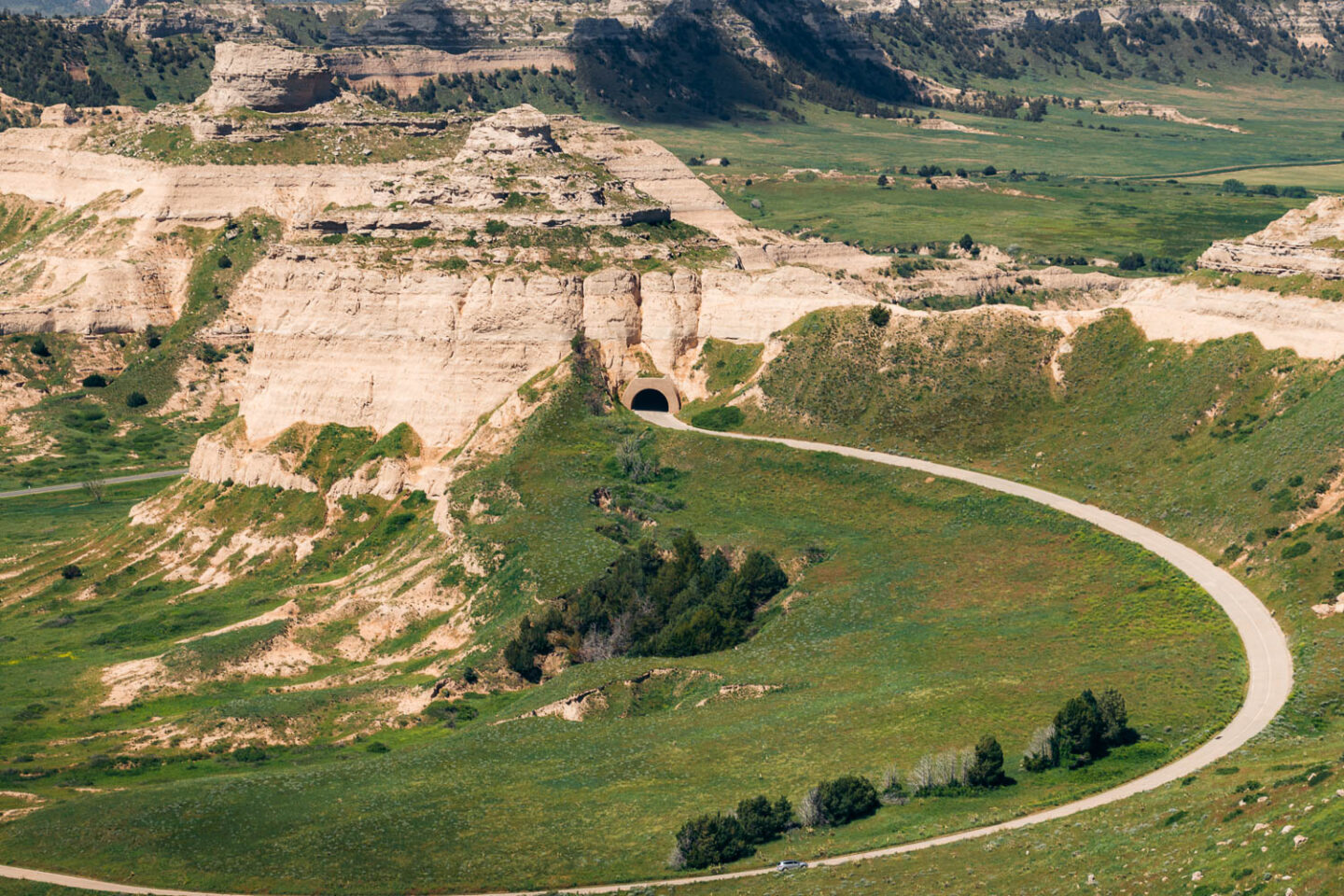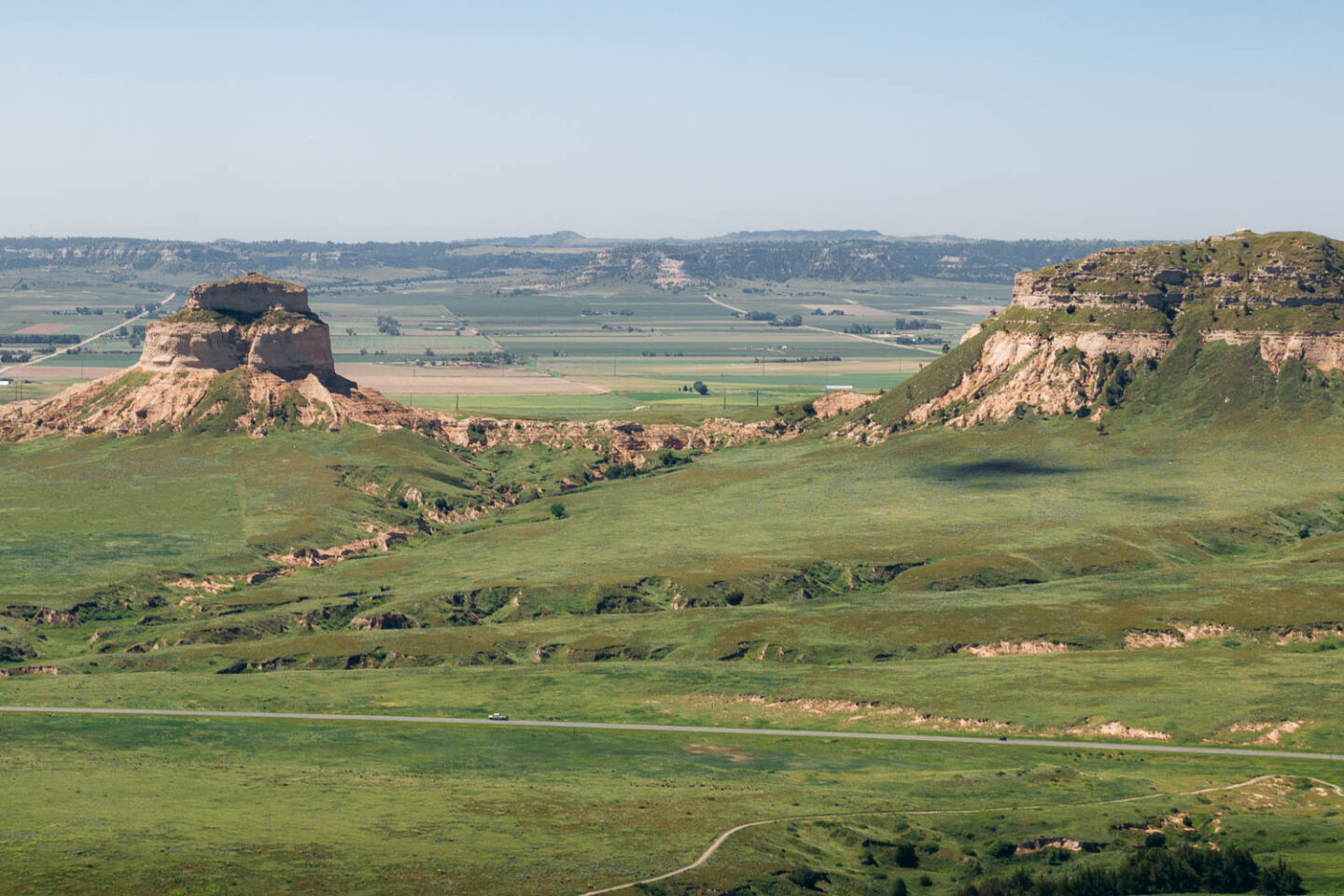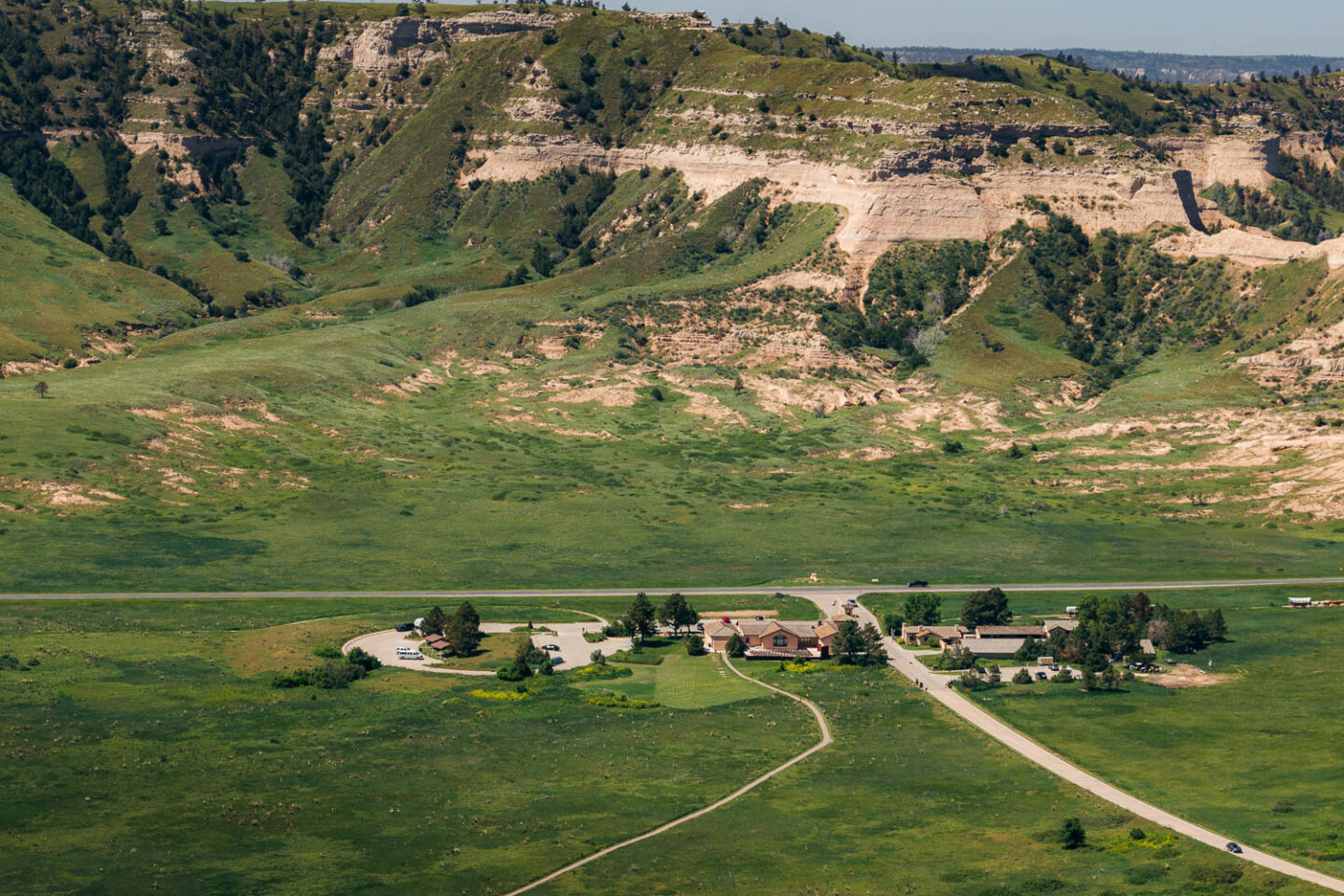A great symbol of the American westward expansion, Scotts Bluff National Monument is still one of the most alluring destinations in the western corner of Nebraska.
Last updated: March 21, 2025
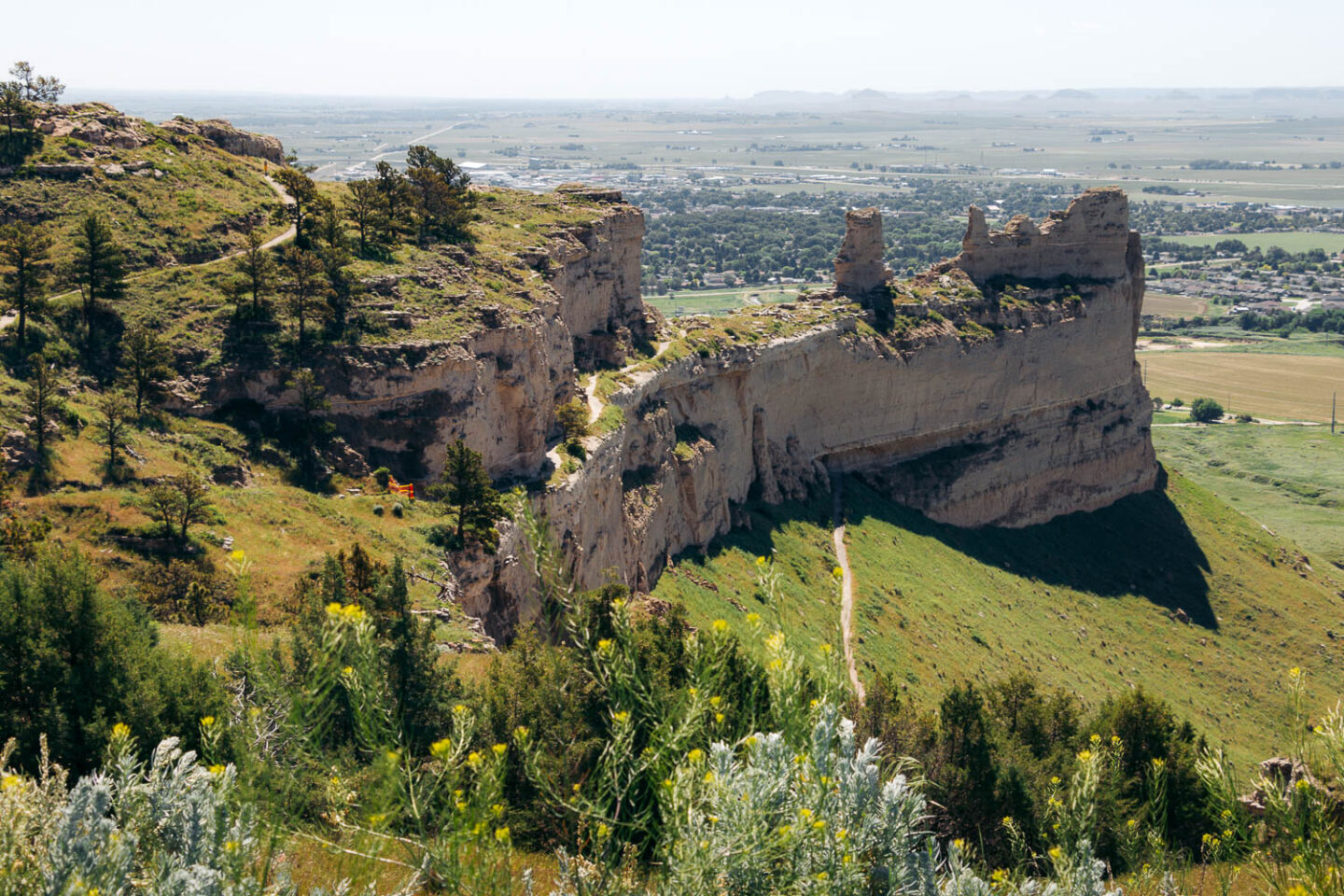
Visiting Scotts Bluff Then and Now
Days, often weeks on the road had a toll on travelers’ morale. Exhausted bodies of the wayfarers craved a roof over their heads and some walls that could protect them from the elements. But there was none. Worse thing, the tedious journey to the West, through the unwelcoming terrain the Oregon Trail ran through, didn’t seem to end…
But what was that? Was it a mirage or did the travelers see something their eyes longed to spot for days? Massive Eagle Rock, a signature sight of Scotts Bluff National Monument that rises 4,482 feet above sea level, indeed towered in the distance.
It was still a long journey ahead. But at last the migrants knew they were in the West. One third on their journey was over.
Often treading behind their canvas-topped wagons to lighten the load for draft animals, people spent weeks on the road before they reached Scotts Bluff in the 1800s. Nearly 350,000 travelers passed by the landmark back then.
Today this journey is only a one-hour drive from Alliance, Nebraska. Following roads that intersect endless prairies and stumble upon occasional small towns, the trip from Denver to Scotts Bluff National Monument is roughly 3 hours long.
Welcome to Scotts Bluff National Monument
Rising 800 feet above the North Platte River, Scotts Bluff National Monument is one of the unlikely places to visit in the Midwest. The 3,000-acre area looks out of place, surrounded by flat prairie land.
For centuries, the region has allured both people and wild creatures. The latter once roamed freely across the plains and the bizarre rock formations. Most of them disappeared as more people settled here. Today, mostly white-tailed and mule deer, black-tailed prairie dogs, and rattlesnakes can be spotted in Scotts Bluff National Monument.
Set amid elevated bluffs and other rock formations, five distinctive rocks of the park – Dome Rock, Crown Rock, Sentinel Rock, Eagle Rock, and Saddle Rock – resemble sacred ruins of an ancient city. For decades, they served as path markers for emigrants traveling along the Oregon, California, Mormon, and Pony Express Trails.
Sadly, the historic bluffs slowly disappear. Wind and water that once created these massive sentinels now chisel them away. One by one, the delicate grains of sand break off. Some years, the erosion may seem insignificant. Others, stimulated by persistent rain and wind, the process is faster than one can imagine. If it continues, Scotts Bluff will eventually be reduced to the level of the surrounding flatlands.
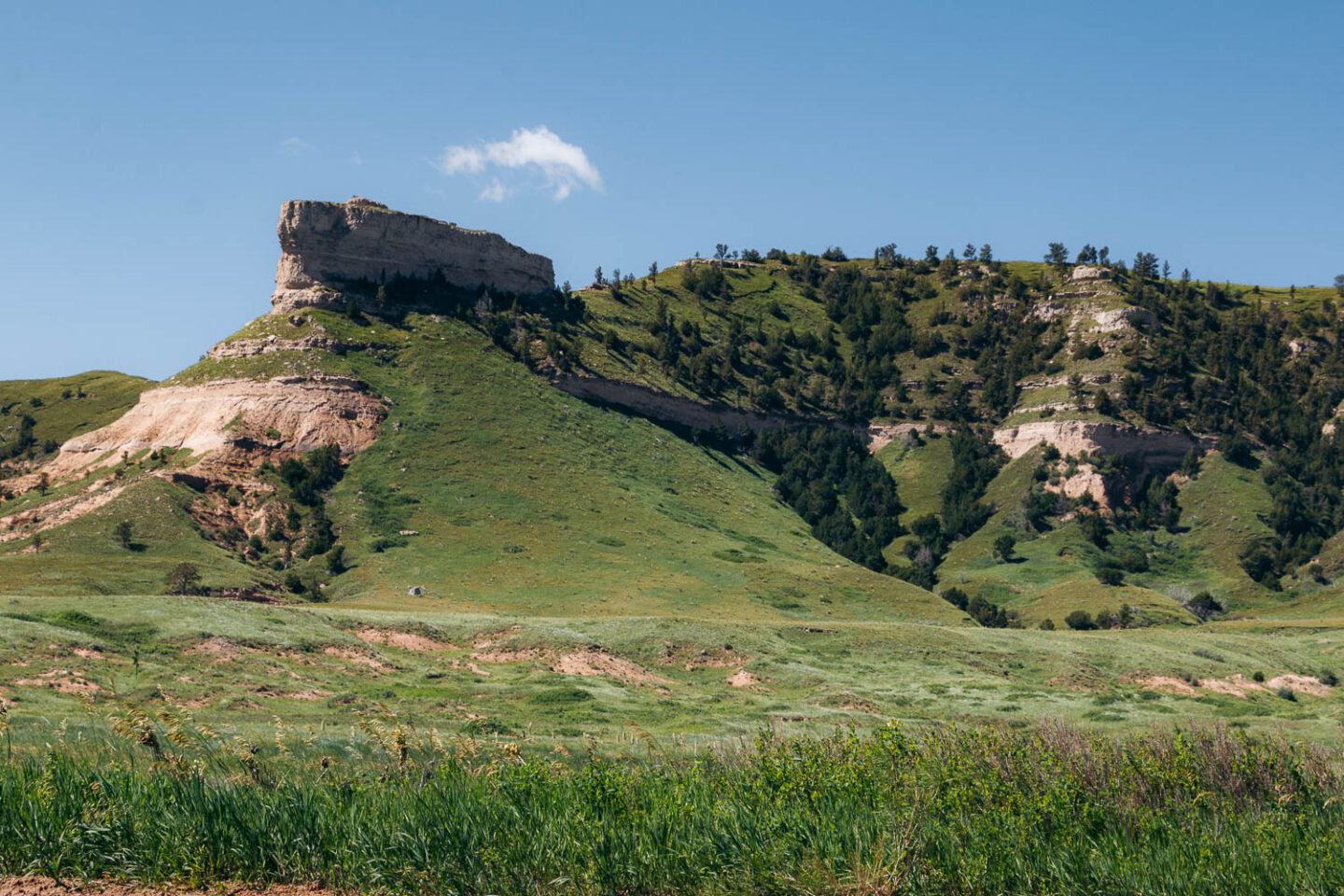
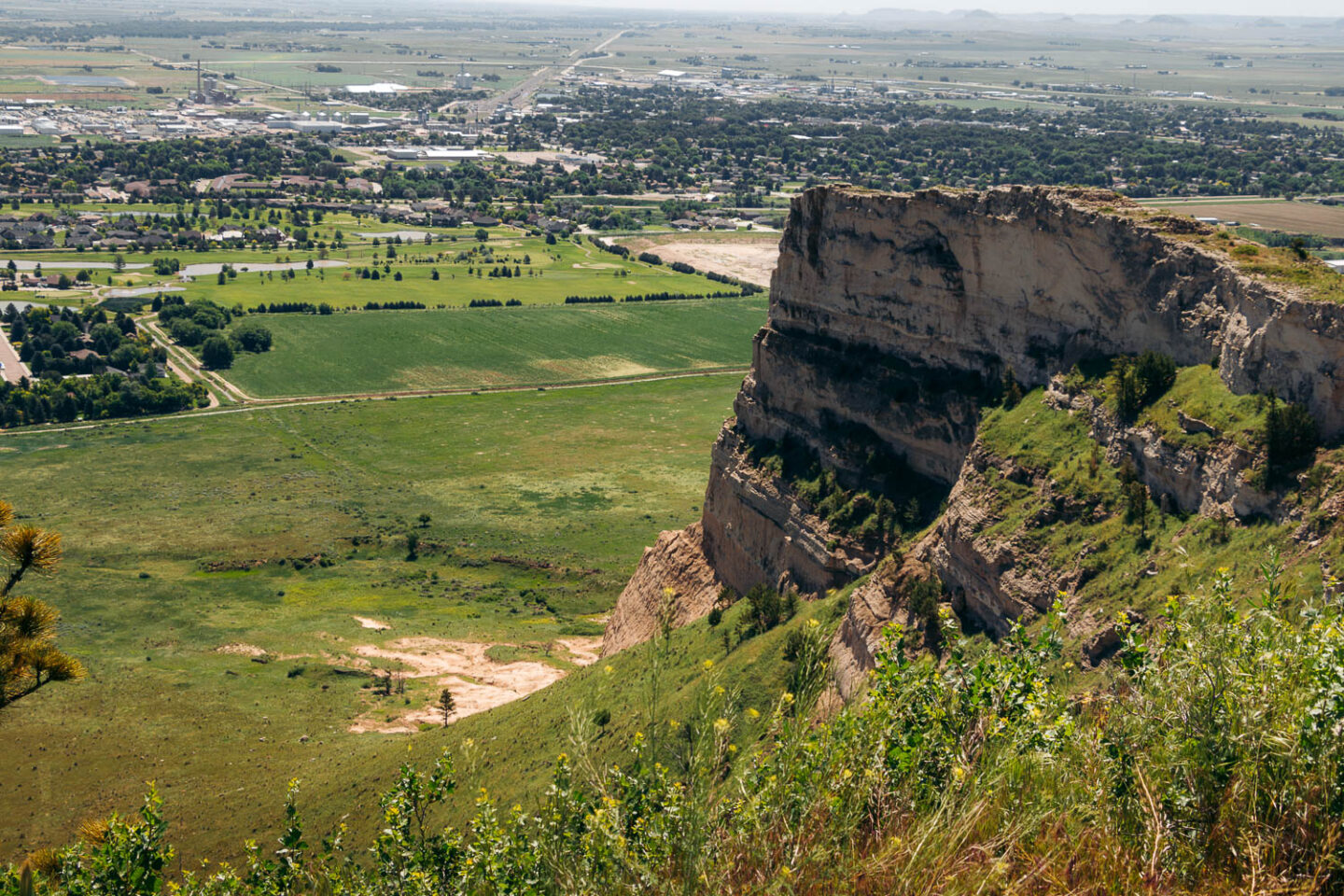
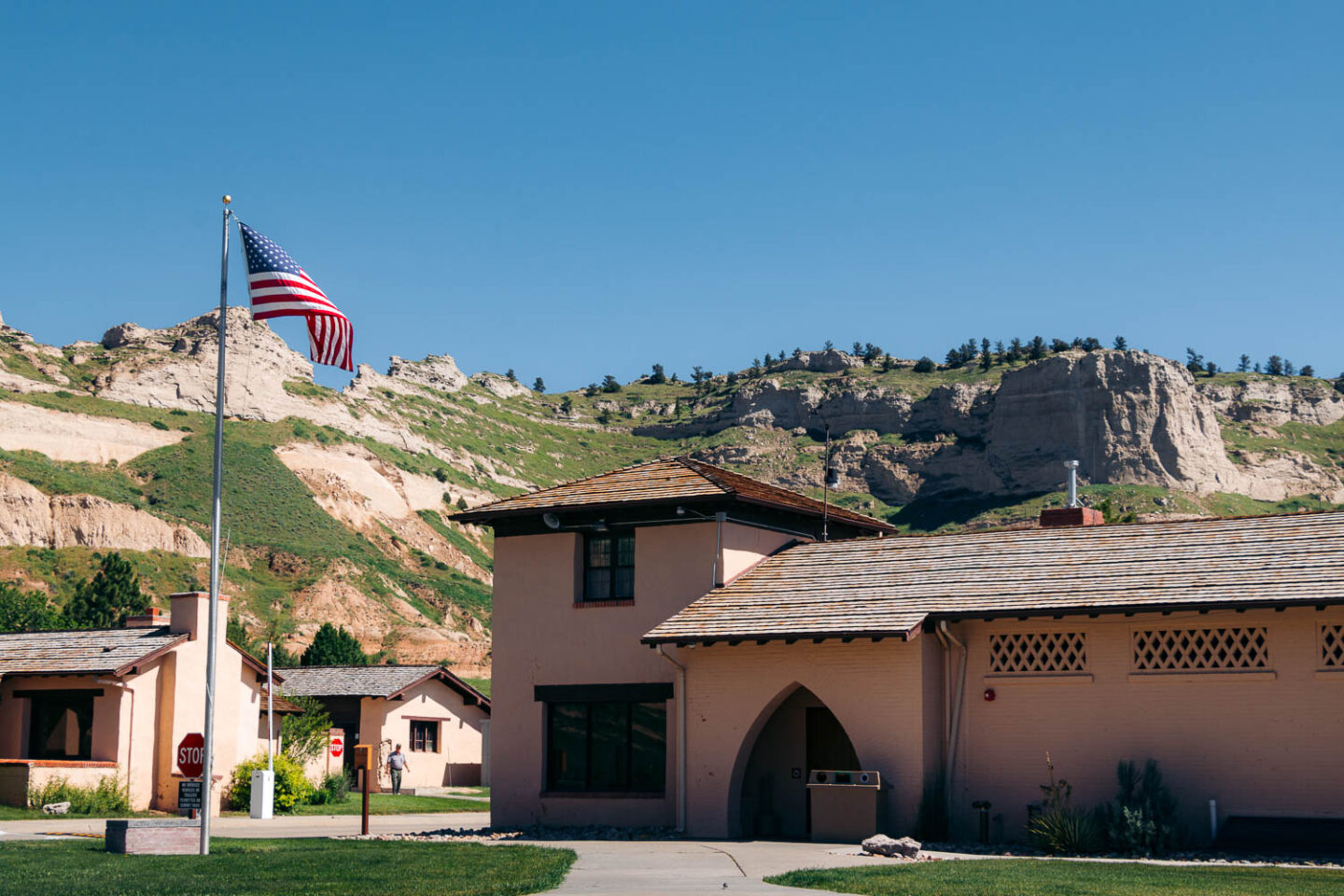
Things to Do at Scotts Bluff National Monument
With completion of the Transcontinental Railroad in 1869 and quite easy travel nowadays, the anticipation of reaching the rocky promontory has faded away. The place gets the attention of mostly locals or those who, looking for hidden gems in the Midwest, come across scarce information of the disappearing giants before setting off on their journey.
So the monument never gets too busy. Not even in summer when the sun shines brightly on the Scotts Bluff area and the views into the valley blanketed by lush greenery become so alluring.
Visitor Center
Almost every trip to Scotts Bluff National Monument starts with a stop at the Visitor Center. The Center is located within a walking distance from the entrance. It features exhibits about the human and natural history of the park and holds a unique collection of artworks by the frontier photographer and artist William Henry Jackson.
Drive the Scotts Bluff Summit Road
The real adventure starts outside the Visitor Center en route to the historic promontory. The 1.6-mile Scotts Bluff Summit Road is the fastest way to get to the top. The winding road starts at the Scotts Bluff Visitor Center parking lot, passes through three tunnels along the way, and stops at the summit with a few hiking trails and expansive views of the valley below.
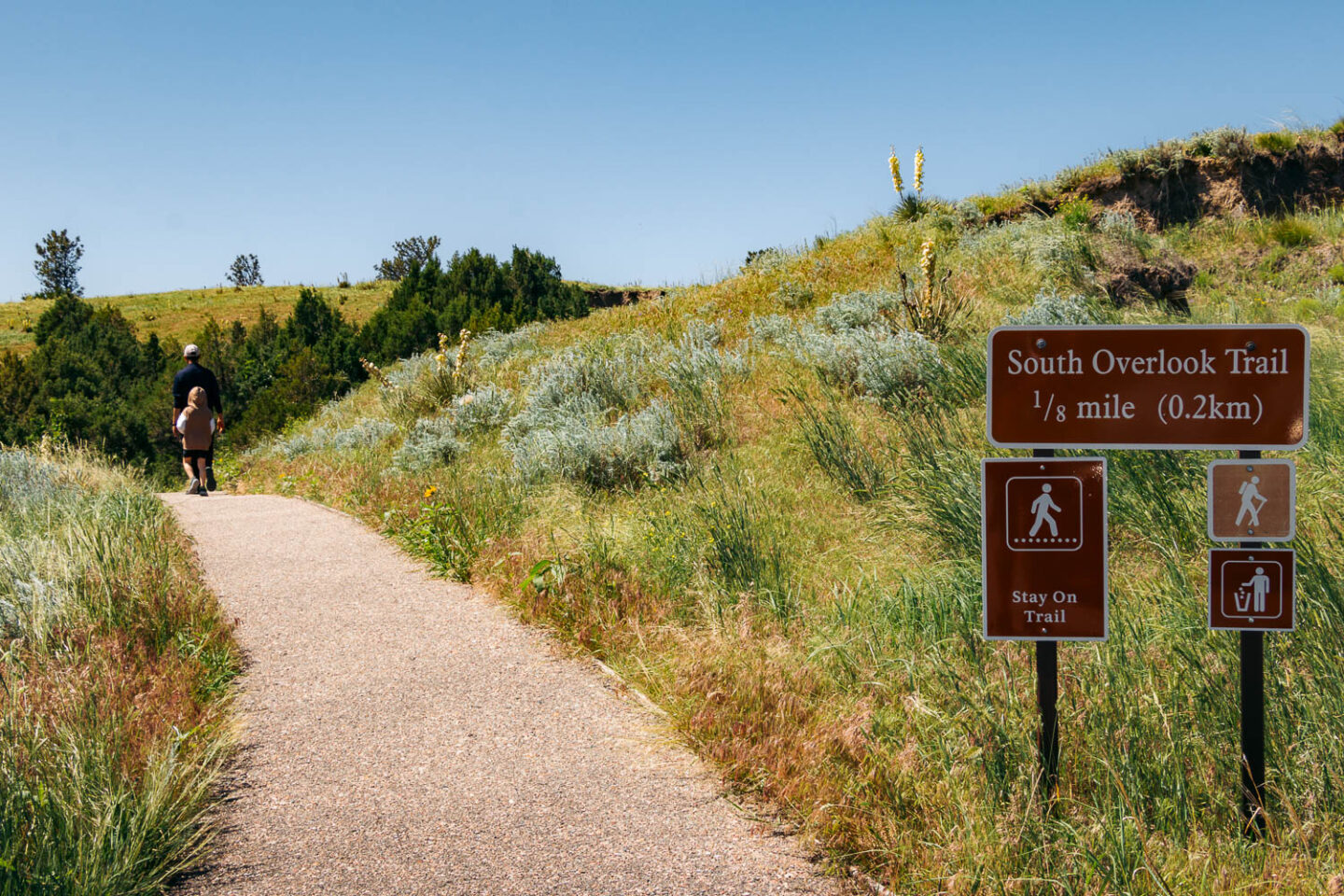
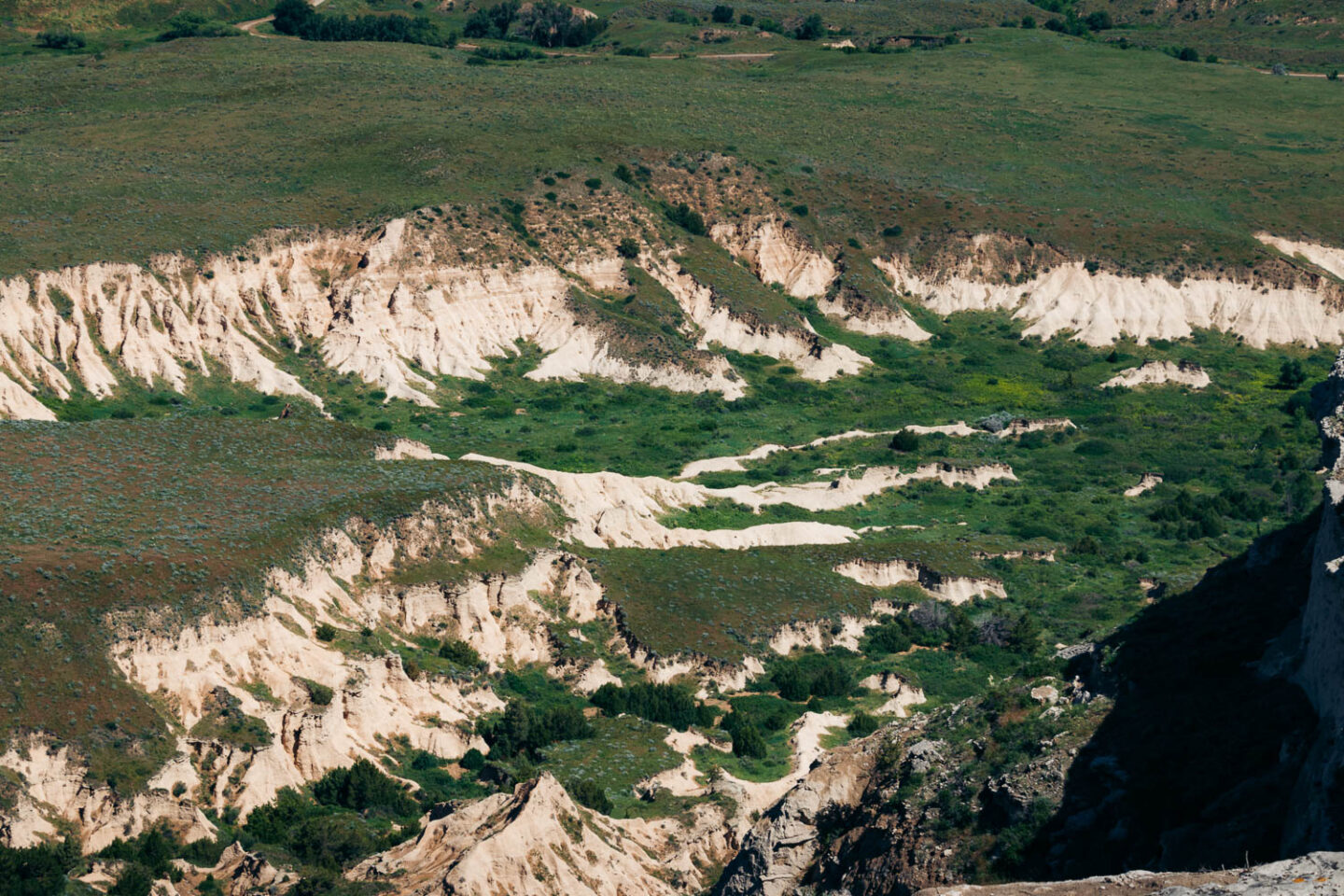
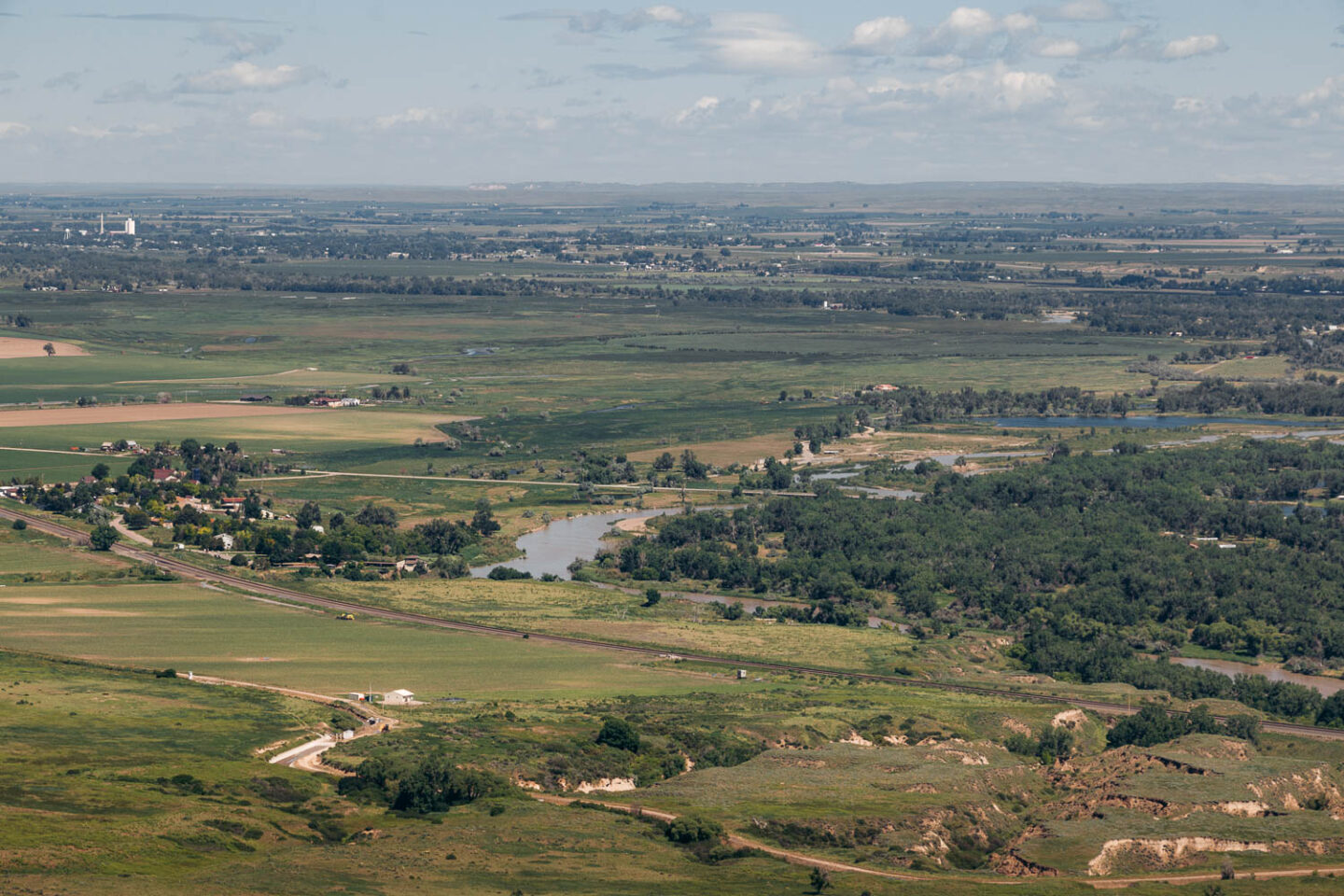
Hiking at Scotts Bluff National Monument
The hiking trails at Scotts Bluff are short. Two trails unfold in the opposite directions from a smaller parking lot at the top of the promontory.
North Overlook Trail
The North Overlook Trail is only 0.5 mile long. It runs along a paved path with astounding views of the North Platte River Valley, badlands, and the cities of Scottsbluff and Gering. As the name suggests, the trail starts at the north end of the summit parking lot and connects to the Saddle Rock Trail.
South Overlook Trail
The South Overlook Trail is even shorter, only 0.4 mile. The path with the trailhead at the southern corner of the summit parking lot provides views of Mitchell Pass, remnants of the Oregon Trail, and the Scotts Bluff National Monument Visitor Center with the winding Scotts Bluff Summit Road running toward the first tunnel.
Saddle Rock Trail
The Saddle Rock Trail is the longest and most strenuous path within the park. The trail runs for 1.6 miles, one way, and leads from the Visitor Center to the summit of Scotts Bluff or vice versa.
Consequently, two trailheads mark the beginning of the Saddle Rock Trail. One sits to the east of the Visitor Center. The second can be found along the North Overlook Trail at the summit.
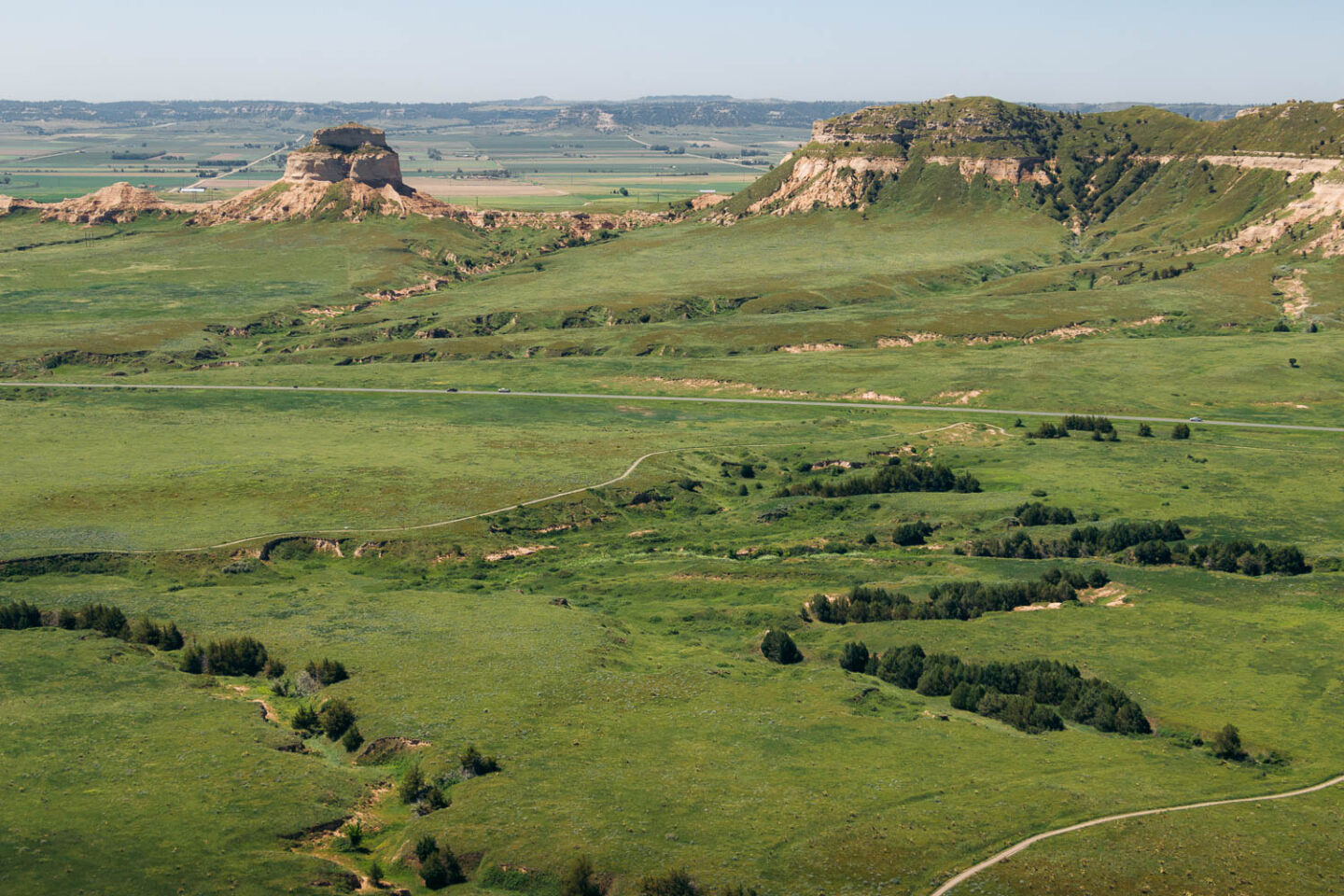
Things to Know before Visiting Scotts Bluff National Monument
- Admission. Admission is free. A ranger still greets you at the entrance to the monument but only to give you instructions and a map.
- Operating Hours. The monument is open all years round, except for a few federal holidays, such as Thanksgiving, Christmas, and New Year’s Day. Normally, the park is open from 9:00am until 5:30pm during the summer season. The off-season Summit Road hours are 9:00am to 4:00pm.
- Dogs. Pets on a six-foot leash are allowed on the paved trails in the park.
- Stay on Trails. Do not litter and stay only on designated trails to protect the natural and cultural heritage of the park.
- Rattlesnakes. Rattlesnakes live at the bottom and top of the bluffs. They normally stay away from the visitors’ path, but may strike if threatened.
- Wildlife. Deer and black-tailed prairie dogs may be spotted in and around Scotts Bluff National Monument. Never feed, approach, or disturb wildlife in any other way.
- Bigger Cars. Trailers and RVs are not allowed on Summit Road. You can park at the Visitor Center parking lot and use the Summit Shuttle instead.
